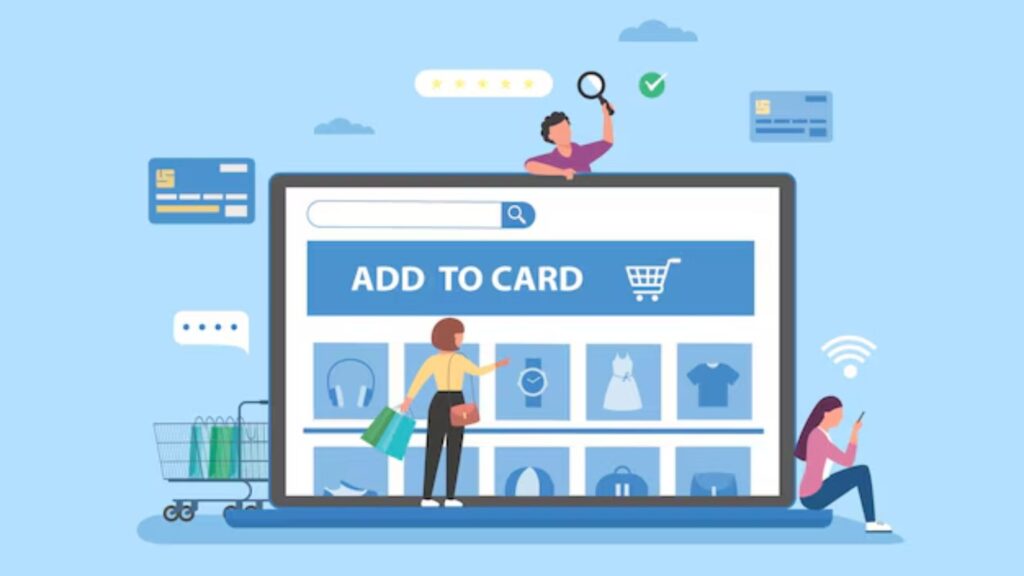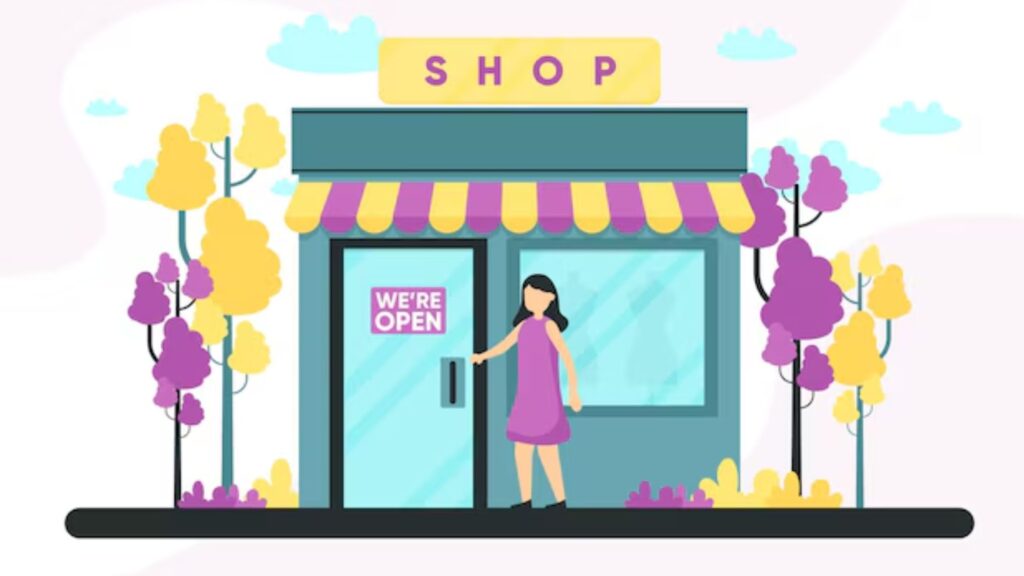If you are looking How to Start Dropshipping business in India :Dropshipping is a business model in which an online store acts as an intermediary between customers and suppliers. Unlike traditional retail, in this model the store does not hold inventory. Instead, when a customer makes a purchase, the store sends the order information to a third-party supplier, who then ships the product directly to the customer. This way entrepreneurs can run a business without investing in and managing physical inventory.

This model has many benefits, such as low initial costs and reduced risk, as the seller does not need to stock or directly handle the product. It also simplifies logistics and reduces overhead expenses related to warehousing and shipping. However, success in dropshipping depends on selecting suppliers, managing customer service, and implementing effective marketing strategies to attract and retain customers.
Table of Contents
To start a dropshipping business, follow these steps and consider the investment involved:
1. How to Start Dropshipping business in India :choose the right niche
Choosing a niche is an important first step to starting a dropshipping business. A niche means a specific product category or market segment that you will focus on. To be successful, it is essential that you select a niche that has high demand but low competition. This balance ensures that there is enough interest in the products you offer, while avoiding a market where there is too much competition and it is challenging to stand out.

The investment required to choose a niche is minimal, which mainly takes time and research. You will need to conduct market research so that you can understand trends, customer preferences, and gaps in the market. Tools such as Google Trends, keyword research tools, and competitive analysis can help you understand which niches have potential. By devoting time to this research, you can identify a niche that matches your interests and offers business opportunities.
2. How to Find Reliable Suppliers for Dropshipping business
Finding reliable suppliers is a crucial step in setting up a successful dropshipping business. Suppliers are those who provide you with the products you will sell to your customers, and their reliability directly affects the functioning of your business. To identify reliable suppliers, you can use platforms like AliExpress, Oberlo, or SaleHoo. These platforms connect you with suppliers who offer a variety of products and support dropshipping.

Using these platforms requires minimal investment. Most of these platforms offer free or low-cost subscription plans, while some may charge for premium features or advanced services. By taking advantage of these resources, you can evaluate supplier reviews, product quality, shipping times, and pricing, allowing you to partner with reliable and effective suppliers. This process helps you maintain a smooth supply chain and provide a better experience for your customers.
3. How to Set Up an Online Store: Initial Investment Information with Shopify and WooCommerce
Setting up an online store is a crucial step in starting a dropshipping business. To build your store, you can use popular e-commerce platforms like Shopify or WooCommerce. These platforms offer user-friendly tools and templates that help you design and manage your online store, even if you lack technical knowledge.

For example, Shopify offers various subscription plans that start at around $29 per month. This investment includes hosting, security, and customer support. This investment covers the cost of maintaining your online store and provides access to various features and integrations to improve your business operations. Additionally, you will also have to pay for the domain name and web hosting, which are necessary to establish your store’s online presence. While WooCommerce itself is a free plugin, you will have to invest separately for hosting and domain name.
Overall, setting up an online store involves subscription fees for the e-commerce platform and additional costs for domain registration and hosting. These investments are crucial to ensuring a professional and functional online presence, which helps attract and retain customers.
4. How to Design Your Store: Customization with Free and Premium Themes
Designing your store is a crucial aspect of establishing a successful online presence. Customizing your store’s design creates a visually appealing and user-friendly shopping experience, which can have a significant impact on customer satisfaction and conversion rates.

For starters, you can use the design tools and templates provided by your e-commerce platform like Shopify or WooCommerce, which offer many free themes. These themes can be customized to suit your brand identity and improve the overall look of your store.
If you want a more unique or advanced design, you may choose to invest in premium themes or hire a professional designer. Premium themes often come with additional features, customization options, and support that can help give your store a more polished and professional look.
The investment for premium themes or professional design services can be minimal to moderate, depending on how much complexity and customization is required. Overall, designing your store involves finding a balance between using the free resources available and investing in high-quality options to achieve a unique and attractive online storefront.
5. Digital Strategies to Market Your Business: SEO, Social Media Advertising, and Email Marketing
Marketing your business effectively is essential to attracting and retaining customers. Implementing digital marketing strategies can help you reach a wider audience and increase traffic to your online store. The main strategies include: search engine optimization (SEO), social media advertising, and email marketing.
SEO involves optimizing your website so that you rank high in search engine results, making it easier for potential customers to find your store. It involves using relevant keywords, creating quality content, and improving site performance. SEO can be time-consuming, but it requires minimal financial investment and offers long-term benefits, increasing organic traffic to your site.

Social media advertising allows you to target specific demographics on platforms like Facebook, Instagram, and Twitter. By creating engaging ads and promotions, you can reach potential customers and increase traffic to your store. Investments for social media ads can vary, but starting with a small budget allows you to test different strategies and make adjustments based on performance.
Email marketing involves sending targeted emails to your subscriber list to promote products, offer discounts, or share updates. This strategy helps maintain customer relationships and encourage repeat purchases. Email marketing platforms often offer various pricing plans, and you can start with the basic features to effectively manage your campaign.
Overall, marketing your business is a mix of SEO, social media, and email marketing strategies. While investments can vary, starting with a small budget for ads and focusing on effective strategies can help you build a strong online presence and grow your business.
6. Order Management and Customer Service: Time and Resources for Smooth Operations
Handling order management and customer service is a crucial part of running a successful dropshipping business. When you start receiving orders, it is essential that you monitor them closely so that each order is processed accurately and timely. This includes checking the status of each order, coordinating with suppliers, and addressing issues that arise during the fulfillment process.

Effective customer service is equally important. Handling customer inquiries and complaints in a professional manner can have a significant impact on customer satisfaction and retention. This includes responding to questions about products, shipping times, returns, and refunds in a timely manner. Providing excellent customer support builds trust and encourages repeat business, which is essential for long-term success.
The investment required for order management and customer service is primarily time. Managing these tasks efficiently can minimize additional costs and prevent potential problems. Using automation tools and customer relationship management (CRM) systems can streamline these processes and reduce the manual effort required. Overall, while order management and customer service requires significant time and attention, if done efficiently it demands minimal additional financial investment.
7. Initial investment required to start a dropshipping business in India: ₹8,000 to ₹40,000
Starting a dropshipping business in India may require an initial investment of around ₹8,000 to ₹40,000, depending on the platform and marketing costs. This investment initially includes subscription fees on e-commerce platforms, such as Shopify or WooCommerce, with prices starting at $29. Additionally, you will also need to pay for a domain name and web hosting, which can range from ₹1,000 to ₹3,000.

Marketing costs are also an important factor. Digital marketing strategies such as SEO, social media advertising, and email marketing may require an initial investment. Social media advertising and other promotional activities can be started with a small budget, but their cost may increase gradually.
Overall, the investment required to start a dropshipping business depends on your chosen platform, marketing strategies, and store design, and can range between ₹8,000 to ₹40,000. With this investment, you can set up a professional and functional online store and run your business successfully.
8. Potential profits from a dropshipping business: the impact of product costs and marketing expenses
The amount of profit you can make from a dropshipping business depends on several factors, such as the cost of the product, the selling price, and marketing expenses. Generally, the profit margin in dropshipping ranges between 10% and 30%. If you sell a product for ₹1,000 and its cost is ₹700, you can make a profit of ₹300 per sale.

To estimate the annual profit, you need to take into account your monthly sales and profit margin. For example, if you sell 100 products every month and make a profit of ₹300 per product, your monthly income will be ₹30,000. On an annual basis, this profit can reach up to ₹3,60,000.
However, it is important to note that the dropshipping business also has additional expenses such as marketing, advertising, and platform fees. Taking these expenses into account, the profit is calculated. If you spend ₹10,000 per month on marketing and advertising and add other expenses as well, your total income may come down.
With the right strategy and dedication, it is possible to make a profit from a dropshipping business, but it always depends on ensuring that there is demand for your product and cost management is done correctly.
Coclusion
Dropshipping is a simple and low-cost business model that offers entrepreneurs the opportunity to start a business without large investments and physical inventory. The main feature of this model is that the store relies on third-party suppliers to ship the products directly to the customer, making it easier for the store to operate and manage. However, running a successful dropshipping business requires selecting reliable suppliers, effective customer service, and strong marketing strategies. By taking care of these factors, one can set up a successful dropshipping business at a low cost.
If u want to Watch the Video You can visit to our You tube Businovations Channel and watch the video……
Click the link to read the Recent Posts….
Start a Resume Writing Service Business with easy Strategies (147)


1 thought on “How to Start Dropshipping business in India with Easy Steps (149)”